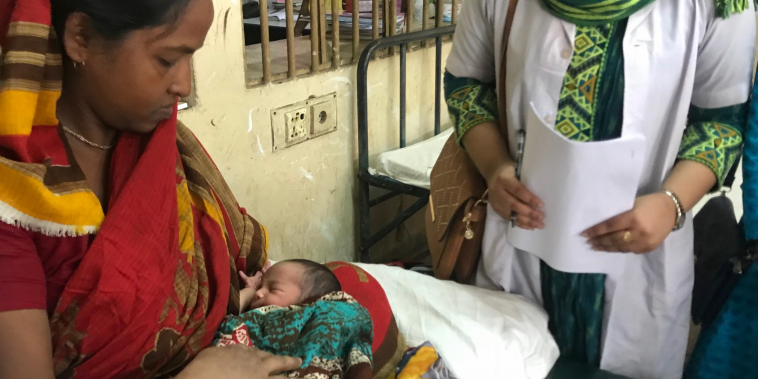Every woman's right: a safe delivery
The birth of a child is supposed to be a happy time for families, but when women don’t have access to quality health care, childbirth becomes tremendously risky for both mother and child.

Although great strides have been taken to decrease the maternal mortality ratio, women across the globe are still dying as a result of complications during pregnancy and childbirth.
That’s why it’s more important than ever to continue to work towards making childbirth safe for every woman — no matter what country she lives in, or what her socioeconomic status is.
World leaders have been working to decrease the maternal mortality rate for decades. At the Millennium Summit in September 2000, they agreed to the Millennium Development Goals (MDGs), which called for the reduction of the maternal mortality ratio by 75 percent between 1990 and 2015.
Most maternal deaths are preventable, as the healthcare solutions to prevent or manage complications are well known.
Said Professor Kristina Gemzell-Danielsson, chair of FIGO's Committee on Human Rights, Refugees and Violence Against Women,
"A huge proportion of maternal deaths and disabilities can be prevented through sexual and reproductive health and rights (SRHR) services. By speaking out, advocating and improving quality of care education and training of healthcare providers we can empower women to make decisions about their own reproductive health, and collectively ensure their fundamental human right."
All women need access to antenatal care in pregnancy, skilled care during childbirth, and care and support in the weeks after childbirth. Skilled health personnel are competent maternal and newborn health professionals who are educated, trained and regulated to national and international standards. Newly-defined by FIGO in collaboration with the World Health Organization (WHO), UNFPA, UNICEF, ICM, ICN, and IPA in 2018, skilled health workers are part of an integrated team working together to perform all key life-saving services of maternal and newborn care.
During the MDG era, the maternal mortality ratio decreased by 44 percent across the globe, from 385 deaths to 216 deaths per 100,000 live births. But today, around 830 women still die every day from preventable complications related to pregnancy and childbirth.
The maternal mortality ratio is higher for women living in rural areas and in poorer communities, says WHO: 239 per 100 000 live births in LMICs versus 12 per 100 000 live births in HICs in 2015.
The risk is even greater for adolescent girls ages 15 or younger. Complications in pregnancy and childbirth - including postpartum haemorrhage, pre-eclampsia and eclampsia, and unsafe abortion - are the leading cause of death for adolescent girls in low-income countries, where 99 percent of maternal deaths occur.
The 2030 Agenda for Sustainable Development has set new targets for the safety of pregnant women and women giving birth, aiming to reduce the global maternal mortality ratio to less than 70 per 100,000 live births. Core tactics for achieving this goal include preventing unintended pregnancies by providing access to modern contraception and access to sexual and reproductive healthcare.
It’s also vital to listen to women themselves because they are the ones who can truly give voice to what’s needed.
FIGO is among the many organisations working to decrease the maternal mortality ratio, and make universal health coverage (UHC) really work for women. With only 11 years till the Sustainable Development Goals are due, there’s still so much more work to be done to continue to help make pregnancy and childbirth safe for women across the globe.